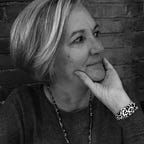How to Read for (More) Pleasure
A refresher to enhance your reading experience
Do you like to read for pleasure? Did you like English class as a kid? The two don’t always go hand-in-hand. Let’s say no, you didn’t particularly like English class, but you like to read now, and maybe you’re even in a book club. More people are reading for pleasure since early 2020 because, well, there’s been time, and there’s also the need for escape. With sites like Goodreads and virtual book groups like Reese Witherspoon’s #rwbookclub, reading is having a bit of a moment.
I was chatting with my friend Lea about a book we both liked. At one point, I made a reference to symbolism in the book and she said, “Gah! I didn’t even see that; how cool.” I mumbled some comments about being an English teacher, and she said, “You know, you should write a piece reminding the casual reader how to read.”
It rolled around in my brain for a bit, and I think I can do that, but you have to be willing — hear me out — to take a walk down memory lane to English class. Stop groaning and give it a try.
My own daughter claims that English class “killed reading” for her. It’s only now that she’s 30 that she’s begun to really enjoy reading again. I don’t blame my English teaching brethren for this — it was more a limitation of curriculum than a testament to their pedagogical abilities. But English curriculum is another topic for another day.
I’d like to teach you HOW to read again, and yes, some of this might sound familiar! When preparing to read a novel, I’d like you to think about plot,theme, character, and other literary elements (remember these?).
Let’s review…
- The basics
Plot: What happens. When talking about a book you’ve read, you likely default to “well, it’s about these two sisters…..” That’s fine, but not always interesting. Of course you want to follow the plot while you’re reading, but while you’re doing that, ask yourself, “what is this writer trying to communicate to me here?”
Theme: The messages the author is intending to communicate through this story. There may be one, there may be several….see if you can tease it out as you read, especially toward the end. Is there a message relating to the human condition (the experiences we humans share)? For example, the mother-daughter relationship is fraught with complexity, or racism is pervasive and spreads when unchecked. Interesting to think about, and fun to discuss. Different readers often recognize different meanings or messages in a text.
Characters: We like a book when we can relate to or “picture” the people in it. If the narrative is first person (“I”), you really get into the head of that character. Do you like them? Can you relate? Are they believable? Again, fun to think and talk about. A well-developed character or narrator can evoke strong emotion in a reader, and be very much missed when the story ends.
2. Literary elements
Beyond plot, theme, and character (which, along with setting, are indeed “building block” literary elements, what are the parts of the book that make you say “that was so well written)”?
- Imagery: Painting a picture with words… color, sensory detail, and descriptions so vivid, it comes alive for you. Notice them, appreciate them. These are the gems in a story that take you there.
- Figurative language: Making comparisons that you can relate to and understand. These are the well placed metaphors and similes. The extended comparison of a difficult journey to a storm, for example, as in Mary Oliver’s The Journey, a beautiful poem about exactly that.
- Symbolism and motif (the recurring symbol): She talks about weather a lot — why?
- Irony, foreshadowing, flashbacks and allusions…. you get the idea.
All these literary elements your English teacher tried to teach you back in the day are the strategies writers employ to make good stories. Recognize them, appreciate their intention, and let them enhance your reading.
3. Archetypes
These are the stories and elements of stories that have been recycled since the beginning of time. Does what you’re reading now seem familiar? Think about the stories that take us on a quest (for love, for self-knowledge, for freedom), the forces good vs. evil, coming of age and loss of innocence; the prodigal son, the sidekick and the outcast; the sex, the baptism, the affliction, and the weather. Rewatch The Shawshank Redemption and you’ll see what I mean. Or better yet read the novella by Stephen King, who is a genius manipulator of archetypes.
As Thomas Foster writes in How to Read Literature Like a Professor, which is WAY better than it sounds, “there is no such thing as a wholly original piece of literature.” Your own prior knowledge is more vast than you realize, and can make you a more confident and reflective reader, if only through recognition.
If you’re in a book club and you want to up your discussion points ante, or if you just want to get the most from reading for your own enjoyment, consider putting these lenses into play as you travel through your next novel. They even work when bingeing on your favorite series; after all, a story is a story! Breaking Bad, for instance, allows us to employ all our English class lenses: complex plot, Walt as the antihero, the landscape as a character, and a theme that explores the darker parts of humanity. It might just make you think a little more kindly about your high school English teacher.
If you want to know more, consider Thomas C. Foster’s book How to Read Literature Like a Professor: A Lively and Entertaining Guide to Reading Between the Lines.
To find your next favorite book, try joining Goodreads or join your local library and get the Libby app on your phone for free. Just keep reading!
